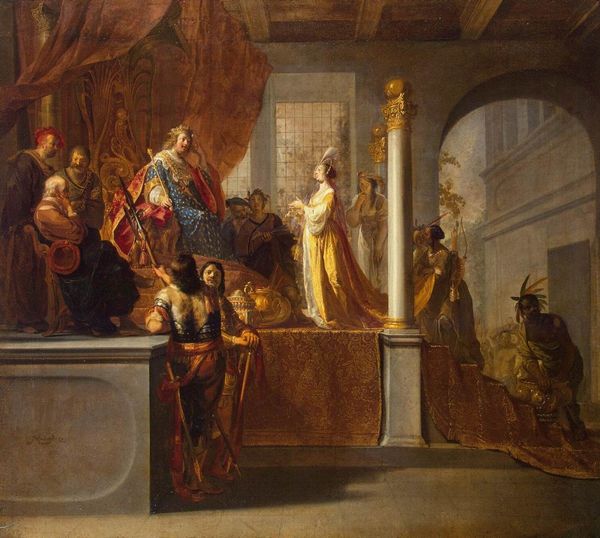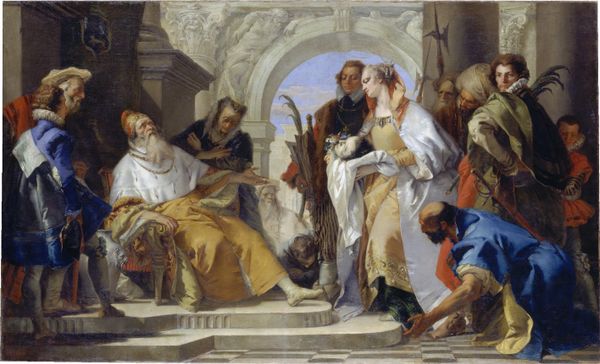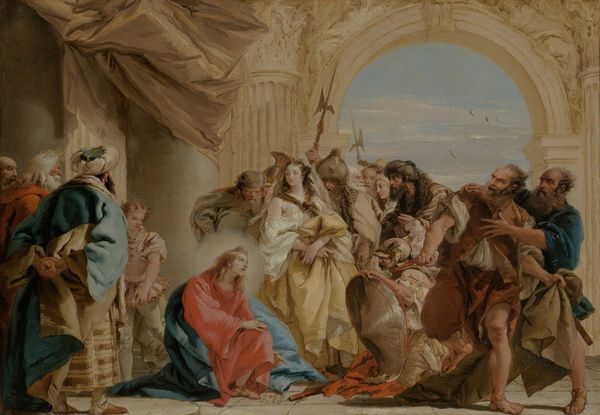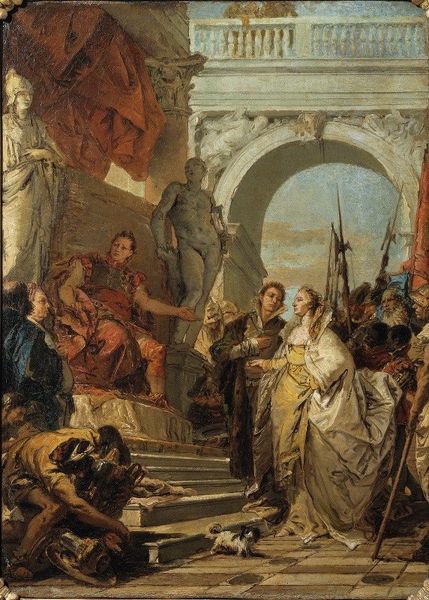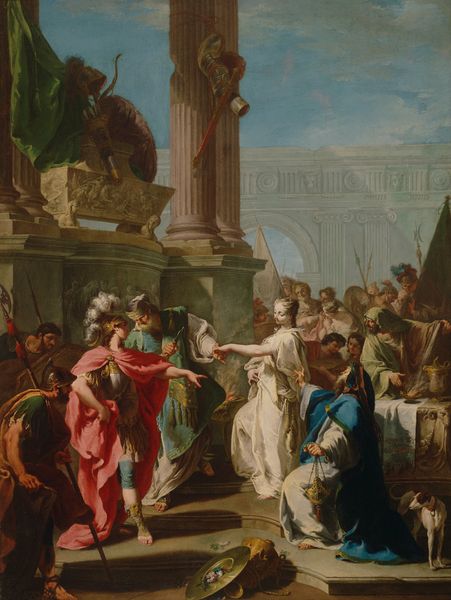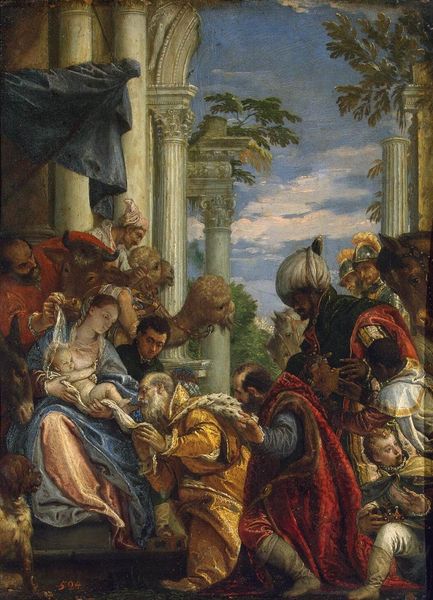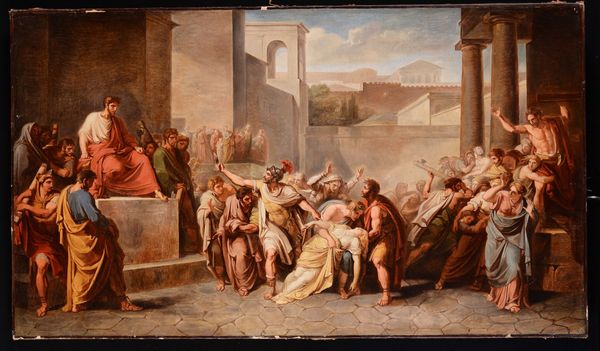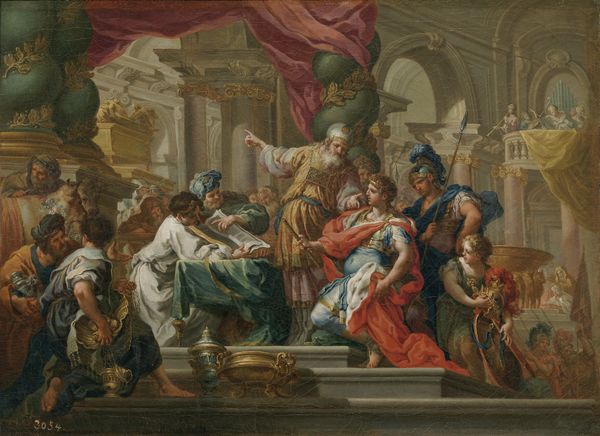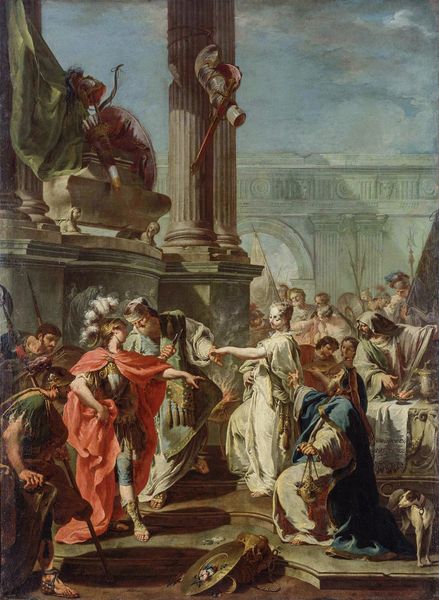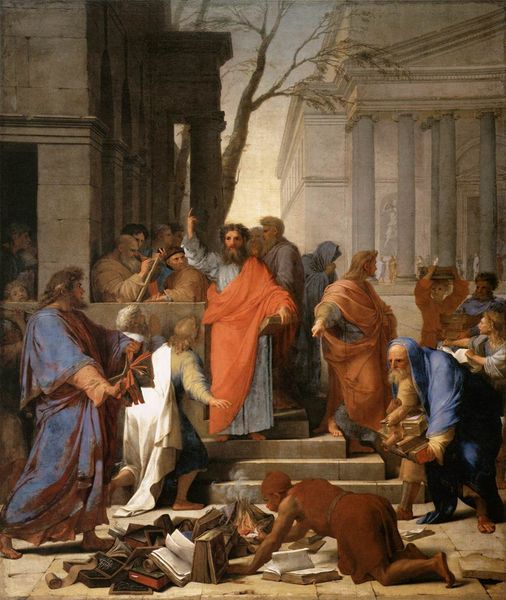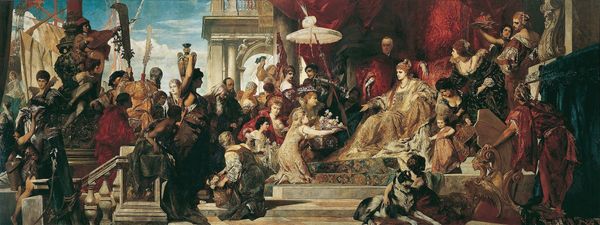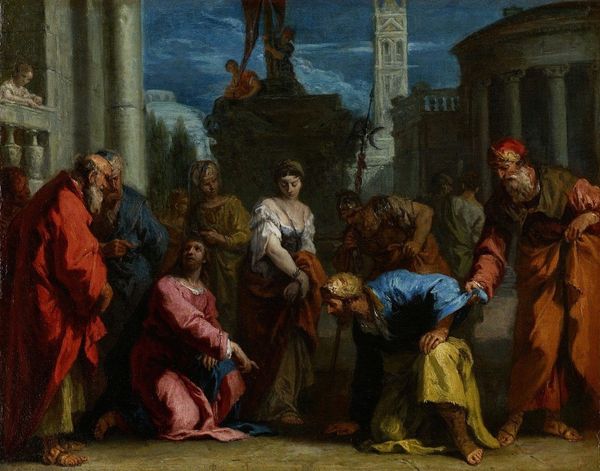
painting, oil-paint
#
gouache
#
figurative
#
baroque
#
painting
#
oil-paint
#
figuration
#
11_renaissance
#
oil painting
#
history-painting
Copyright: Public Domain: Artvee
Curator: This painting just pulsates with pomp and circumstance, wouldn't you agree? Editor: It’s certainly staged to that effect. I find it busy, perhaps intentionally so. All these figures jockeying for position on the canvas make me question what’s actually important here. Curator: We are looking at Giovanni Battista Tiepolo’s oil on canvas from about 1751-52, titled "The Investiture of Bishop Harold as Duke of Franconia." Tiepolo excels at theatrical scenes, and this is a particularly vibrant example of history painting rendered with Baroque exuberance. Note the dynamism in the composition, the almost operatic gestures... Editor: Precisely. It’s a very studied artificiality, intended to glorify power. Tell me more about the history being depicted. Is the visual spectacle rooted in any socio-political reality, or is it pure... theater? Curator: Ah, therein lies some intrigue. The event depicted is real, part of the Holy Roman Empire’s complex power dynamics. But Tiepolo wasn’t simply illustrating; he was constructing an ideal of leadership, a symbolic performance. Consider the robes, the flags, the placement of the figures almost like in a play—all amplifying a sense of authority. Symbols everywhere underscore the idea of power divinely sanctioned, legitimacy meticulously displayed. Editor: So the painting is more than a document of an event, it's a piece of political propaganda? It looks like the entire scene is curated to establish social order through symbolism and theatrics. Curator: I’d say so, yes. It uses symbols and visual rhetoric to reinforce a particular narrative. Take the classical statues placed above the seated figures, framing the sky like an idealized backdrop. Their presence suggests an enduring lineage of power. It merges pagan, religious, and dynastic elements to bolster authority. Editor: This certainly illuminates how art acts as a key tool in constructing and broadcasting historical narratives. It prompts viewers to ponder about which version of reality is deemed worthy of remembrance. Curator: Indeed, and it also demonstrates how skilled artists like Tiepolo shape and transmit ideological beliefs across generations. It makes you think about the role of public imagery and art's active involvement in solidifying cultural memory. Editor: Precisely! This exploration reveals art’s significance within complex socio-political systems. It emphasizes that such imagery isn't neutral—but instead, a compelling argument that actively shapes both past interpretations and potential future projections.
Comments
No comments
Be the first to comment and join the conversation on the ultimate creative platform.
